

A two-speed IT architecture for the digital enterprise. Digital business models have become essential for companies across a range of industries.
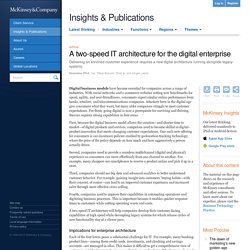
With social networks and e-commerce websites setting new benchmarks for speed, agility, and user-friendliness, consumers expect similar online performance from banks, retailers, and telecommunications companies. Attackers born in the digital age give consumers what they want, but many older companies struggle to meet customer expectations. For them, going digital is now a prerequisite for surviving and thriving. Success requires strong capabilities in four areas. First, because the digital business model allows the creation—and shorter time to market—of digital products and services, companies need to become skilled at digital-product innovation that meets changing customer expectations. Second, companies need to provide a seamless multichannel (digital and physical) experience so consumers can move effortlessly from one channel to another.
Implications for enterprise architecture Zero downtime. Winning with IT in consumer packaged goods: Seven trends transforming the role of the CIO. Consumer-packaged-goods (CPG) companies have traditionally viewed technology as a necessary business expense to be managed in the most efficient way possible.

As IT spending increased over the past two decades, managers concentrated on standardizing IT systems across the company and reducing costs. Post-Agile: A Design Thinking Approach to Software Development. Regardless of how trained and focused your people are, when the projects you work on vary in complexity and time finding a single project management solution that works for all is impossible.
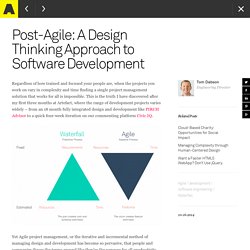
This is the truth I have discovered after my first three months at Artefact, where the range of development projects varies widely – from an 18 month fully integrated design and development like PIRCH Advisor to a quick four-week iteration on our commenting platform Civic IQ. Yet Agile project management, or the iterative and incremental method of managing design and development has become so pervasive, that people and companies throw the terms around like they’re the panacea for all productivity issues. Not only that, they expect you to blindly embrace and follow the methodology regardless of the project at hand. Human-Centered Design & Customer Experience Innovation Tools. RGB ledlamp - Intro. Since RGB-leds became powerful enough to be used in lighting, I've been planning on incorporating them in my house interior somehow.
I think the way you can set the atmosphere from nice and cool blue to warm red is something to be desired. A while ago, I've received a Philips LivingColor-lamp, so I already know how it feels. Now I live in my own house, though, a single lamp isn't going to cut it. Wireless RGB light bulb. The Anatomy of an Experience Map. Experience maps have become more prominent over the past few years, largely because companies are realizing the interconnectedness of the cross-channel experience.
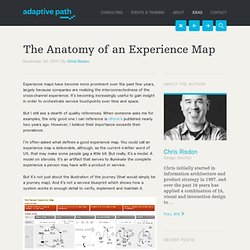
It’s becoming increasingly useful to gain insight in order to orchestrate service touchpoints over time and space. But I still see a dearth of quality references. When someone asks me for examples, the only good one I can reference is nForm’s published nearly two years ago. Human-Centered Design & Customer Experience Innovation Tools. Comisión Europea : CORDIS. Mural.ly. Digital Attack. What. (3) What companies are similar to IDEO? Medallia Home. Desarrollo rápido de productos innovadores para mercados emergentes. Copenhagen Institute of Interaction Design. Method Cards. Customer Journey Map. Why every leader should care about digitization and disruptive innovation.
The disruptive impact of technology is the topic of a McKinsey-hosted discussion among business leaders, policy makers, and researchers at this year’s meeting of the World Economic Forum, in Davos, Switzerland.
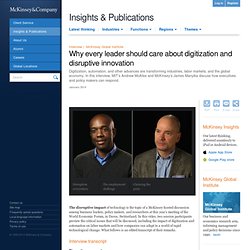
How to Revitalize Your Digital Business Model. The Discipline of Creativity. Ideas can come from anywhere.
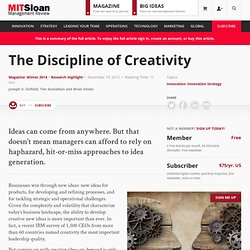
But that doesn’t mean managers can afford to rely on haphazard, hit-or-miss approaches to idea generation. Businesses win through new ideas: new ideas for products, for developing and refining processes, and for tackling strategic and operational challenges. Given the complexity and volatility that characterize today’s business landscape, the ability to develop creative new ideas is more important than ever. In fact, a recent IBM survey of 1,500 CEOs from more than 60 countries named creativity the most important leadership quality. The Age of the Consumer-Innovator. Recent research shows that consumers collectively generate massive amounts of product innovation.
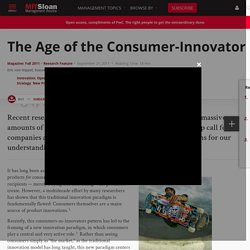
These findings are a wake-up call for both companies and consumers — and have significant implications for our understanding of new product development. It has long been assumed that companies develop new products for consumers, while consumers are passive recipients — merely buying and consuming what producers create. However, a multidecade effort by many researchers has shown that this traditional innovation paradigm is fundamentally flawed: Consumers themselves are a major source of product innovations.1 Recently, this consumers-as-innovators pattern has led to the framing of a new innovation paradigm, in which consumers play a central and very active role.2 Rather than seeing consumers simply as “the market,” as the traditional innovation model has long taught, this new paradigm centers on consumers and other product users.
National Surveys of Consumer Innovation Support user innovation. DBS Bank Pumps Up the Volume on its Technology. Singapore’s largest bank is using analytics, social media, mobile and other technologies to boost customer satisfaction and performance.
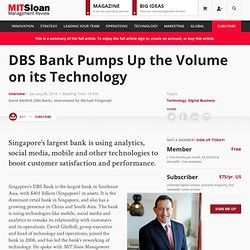
Singapore’s DBS Bank is the largest bank in Southeast Asia, with $401 billion (Singapore) in assets. It is the dominant retail bank in Singapore, and also has a growing presence in China and South Asia. The bank is using technologies like mobile, social media and analytics to remake its relationship with customers and its operations. The Nine Elements of Digital Transformation. In-depth research with executives at a wide range of companies shows how managers can use technology to redefine their businesses.
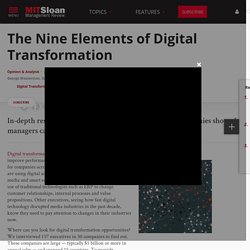
Digital transformation — the use of technology to radically improve performance or reach of enterprises — is a hot topic for companies across the globe. Executives in all industries are using digital advances such as analytics, mobility, social media and smart embedded devices as well as improving their use of traditional technologies such as ERP to change customer relationships, internal processes and value propositions. Other executives, seeing how fast digital technology disrupted media industries in the past decade, know they need to pay attention to changes in their industries now.